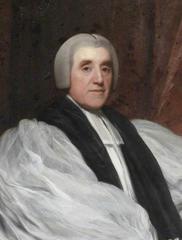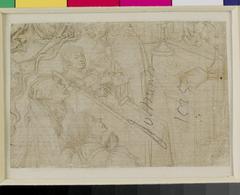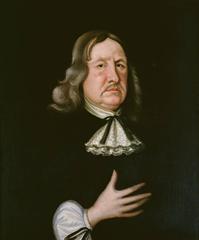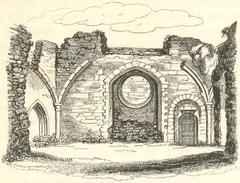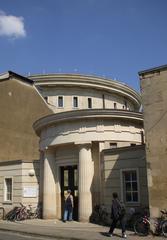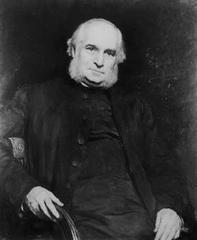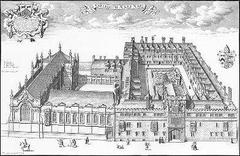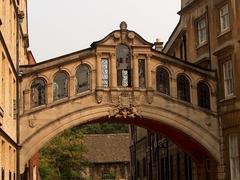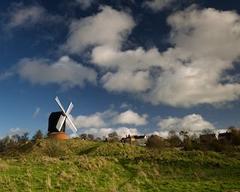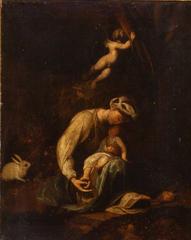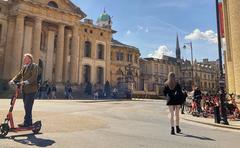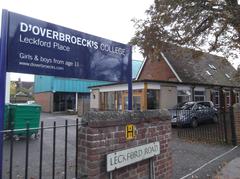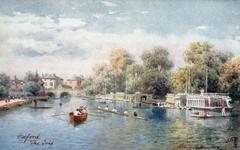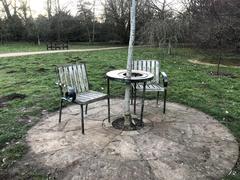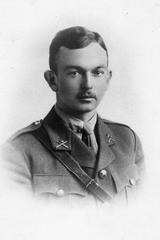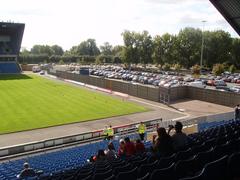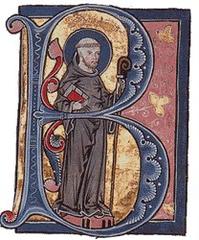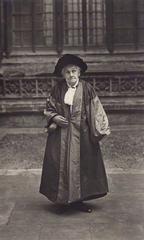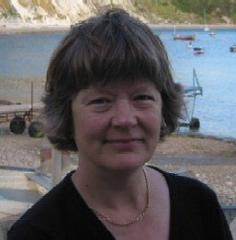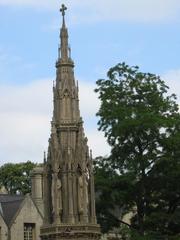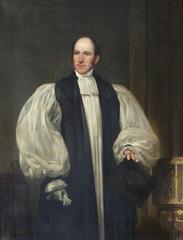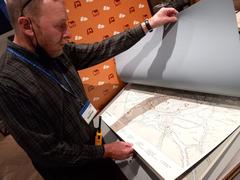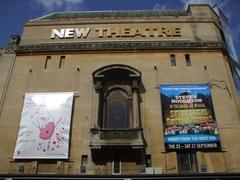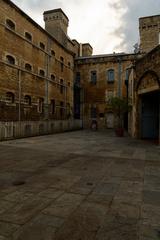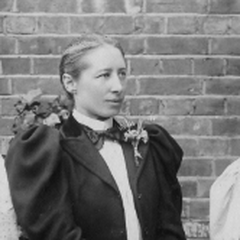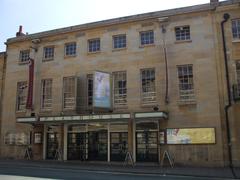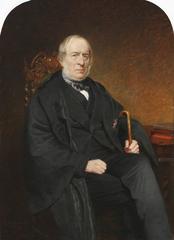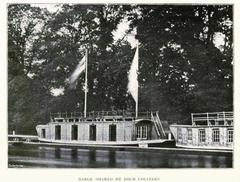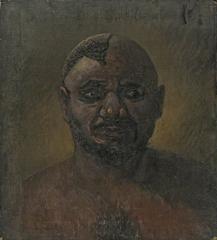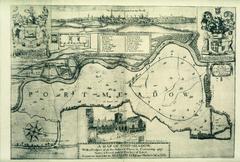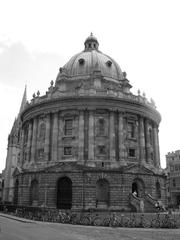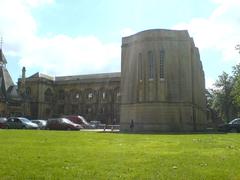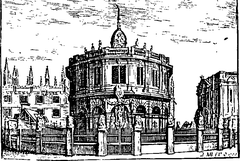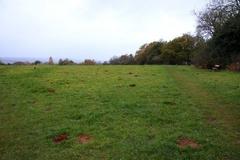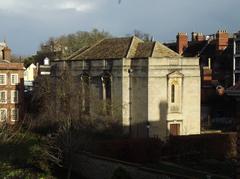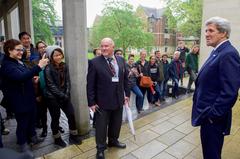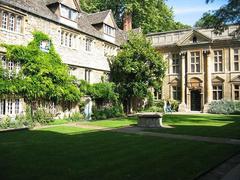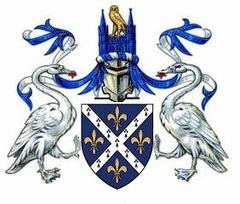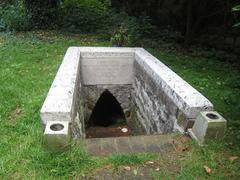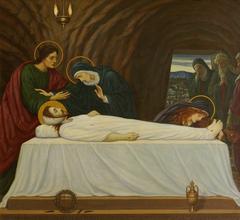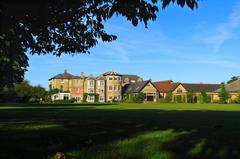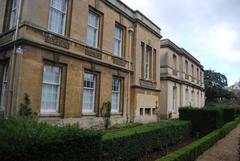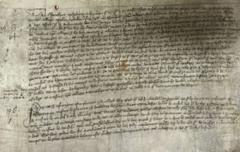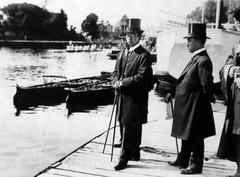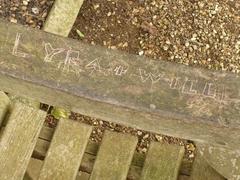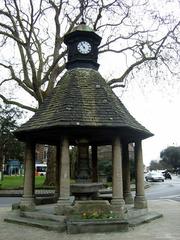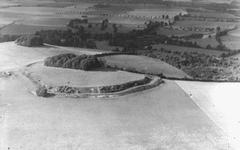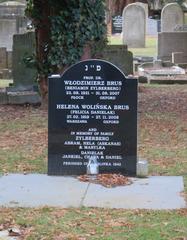Comprehensive Guide to Visiting The Covered Market, Oxford, United Kingdom
Date: 17/07/2024
Introduction
The Covered Market in Oxford, United Kingdom, is a historic and vibrant marketplace that has been a cornerstone of the city’s commercial life since its inception in 1774. This guide aims to provide a comprehensive overview of the market, detailing its rich history, architectural evolution, cultural significance, and practical visitor information. Originally established to centralize market activities and improve sanitary conditions in Oxford, the market has grown to become an iconic destination that attracts both locals and tourists. Designed by renowned architect John Gwynn, the market’s Georgian architecture and subsequent Victorian enhancements create a unique blend of historical styles (Oxford Covered Market). The market’s significance extends beyond commerce, serving as a cultural hub that reflects the diverse and vibrant community of Oxford. Home to a variety of independent traders, the market offers a snapshot of the local culture and economy, supporting local artisans and small businesses (Historic England). This guide will also provide practical information on visiting hours, ticket prices, and tips to make the most of your visit, ensuring a memorable experience at this historic gem.
Table of Contents
- Introduction
- Origins and Establishment
- Architectural Evolution
- Economic and Social Impact
- Notable Events and Changes
- Visitor Information
- Preservation and Modernization
- Cultural Significance
- Challenges and Future Prospects
- Nearby Attractions
- FAQ
- Conclusion
- References
Origins and Establishment
The Covered Market was officially opened on November 1, 1774, following a decision by the Oxford City Council to create a centralized location for traders. This decision was driven by the need to address the chaotic and unsanitary conditions of street trading in the city at the time. The market was designed by John Gwynn, a notable architect who also designed Magdalen Bridge in Oxford (Oxford Covered Market).
Architectural Evolution
The original structure of the Covered Market was relatively modest, but it has undergone several expansions and renovations over the years. The initial design featured a series of arcades with open stalls, which were later enclosed to protect traders and shoppers from the elements. Significant architectural changes occurred in the 19th century, including the addition of a high, glass-covered roof that allowed natural light to flood the market, creating a more pleasant shopping environment. This Victorian-era enhancement is still a defining feature of the market today (Historic England).
Economic and Social Impact
Throughout its history, the Covered Market has played a crucial role in the local economy. In the 18th and 19th centuries, it was the primary source of fresh produce, meat, and other goods for Oxford’s residents. The market’s central location made it a hub of activity, attracting not only locals but also visitors from surrounding areas. This influx of people contributed to the growth of nearby businesses and helped establish Oxford as a significant commercial center (Oxford History).
Notable Events and Changes
The Covered Market has witnessed numerous significant events and changes over the centuries. During World War II, the market remained open, providing essential supplies to the local population despite the challenges of wartime rationing. In the post-war period, the market adapted to changing consumer preferences, with many traditional stalls giving way to more diverse offerings, including specialty shops and eateries. This adaptability has been key to the market’s enduring popularity (Oxford Mail).
Visitor Information
Visiting Hours
The Covered Market is typically open from 8:00 AM to 5:30 PM, Monday through Saturday, and from 10:00 AM to 4:00 PM on Sundays. However, these hours can vary, so it’s advisable to check the official website before planning your visit.
Tickets
Entry to the Covered Market is free. However, some special events or guided tours may require tickets. Check the market’s official website for the latest information on any ticketed events.
Preservation and Modernization
In recent decades, there has been a concerted effort to preserve the historic character of the Covered Market while also modernizing its facilities. The market is now a Grade II listed building, which means it is recognized for its historical and architectural significance and is protected by law. Efforts to maintain the market’s heritage include careful restoration of its original features and the use of traditional materials in any new construction or repairs (Historic England).
Cultural Significance
The Covered Market is not just a place of commerce; it is also a cultural landmark. It has been featured in various literary works, including those of famous Oxford authors like Lewis Carroll and Philip Pullman. The market’s unique atmosphere, with its blend of old-world charm and contemporary vibrancy, continues to attract tourists and locals alike. It is a place where history and modernity coexist, offering a glimpse into Oxford’s rich past while serving the needs of today’s shoppers (Oxford Covered Market).
Challenges and Future Prospects
Despite its many successes, the Covered Market faces challenges typical of historic marketplaces. Competition from modern shopping centers and online retail has impacted foot traffic, and there are ongoing debates about how best to balance preservation with the need for modernization. However, the market’s management and the local community are committed to ensuring its future. Initiatives such as special events, marketing campaigns, and partnerships with local businesses aim to keep the market relevant and vibrant (Oxford Mail).
Nearby Attractions
Visitors to the Covered Market can also explore other nearby attractions, such as the University of Oxford, the Bodleian Library, and the Ashmolean Museum. These sites offer a deeper dive into the rich history and culture of Oxford.
FAQ
What are the opening hours of the Covered Market? The market is typically open from 8:00 AM to 5:30 PM, Monday through Saturday, and from 10:00 AM to 4:00 PM on Sundays. However, these hours can vary.
Are guided tours available at the Covered Market? Yes, guided tours are available. Check the official website for more details on scheduling and ticket prices.
Is photography allowed in The Covered Market? Yes, but it’s polite to ask for permission before taking photos of individual stalls or products.
What payment methods are accepted? Most stalls accept credit and debit cards, but it’s advisable to carry some cash for smaller purchases.
Conclusion
The Covered Market in Oxford is a testament to the city’s ability to preserve its historical heritage while adapting to contemporary needs. Its rich history, architectural beauty, and cultural significance make it a must-visit destination for anyone interested in experiencing the heart of Oxford. As it continues to evolve, the market remains a vital part of the city’s identity, offering a unique shopping experience that blends the past with the present. Plan your visit today and immerse yourself in the rich cultural tapestry that is The Covered Market in Oxford (Oxford Mail).
References
- Oxford Covered Market, n.d. https://www.oxford.gov.uk/info/20064/markets/366/covered_market
- Historic England, n.d. https://historicengland.org.uk/listing/the-list/list-entry/1047145
- Oxford Mail, n.d. https://www.oxfordmail.co.uk/news/1774-covered-market-history/
